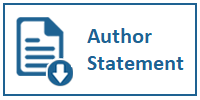K-Nearest Neighbors Algorithm to Student Opinion of the Online Learning Method at Wira Wacana Sumba Christian University
DOI:
https://doi.org/10.31937/si.v12i2.2090Abstract
The education sector is one of the areas that has felt the major impact of the Covid-19 pandemic. The impact that arises is teaching and learning process must be carried out from home using the online learning method. This teaching and learning method raises a variety of responses from students. This is what makes researchers analyze these views, both in the form of positive opinions or negative opinions. The analysis process is carried out by applying sentiment analysis or opinion mining from the comment on Facebook, text mining is processed using the prepocessing method, labeled it to positive and negative. Based on the available data, a classification process is carried out using the K-Nearest Neighbors algorithm. Rapid Miner is used to experiment text data with the KNN algorithm in order to find the value of accuracy, precision and recall. From the results of research, it was obtained a value of 87.00% for accuracy and 0.916 for the AUC value. The values "‹"‹are high enough for the classification of student opinion against this pandemic so that this research is classified as Excellent Classification.
Downloads
Downloads
Published
How to Cite
Issue
Section
License
Authors retain copyright and grant the journal right of first publication with the work simultaneously licensed under a Creative Commons Attribution-ShareAlike International License (CC-BY-SA 4.0) that allows others to share the work with an acknowledgement of the work's authorship and initial publication in this journal.
Authors are able to enter into separate, additional contractual arrangements for the non-exclusive distribution of the journal's published version of the work (e.g., post it to an institutional repository or publish it in a book), with an acknowledgement of its initial publication in this journal.
Copyright without Restrictions
The journal allows the author(s) to hold the copyright without restrictions and will retain publishing rights without restrictions.
The submitted papers are assumed to contain no proprietary material unprotected by patent or patent application; responsibility for technical content and for protection of proprietary material rests solely with the author(s) and their organizations and is not the responsibility of the ULTIMA InfoSys or its Editorial Staff. The main (first/corresponding) author is responsible for ensuring that the article has been seen and approved by all the other authors. It is the responsibility of the author to obtain all necessary copyright release permissions for the use of any copyrighted materials in the manuscript prior to the submission.















